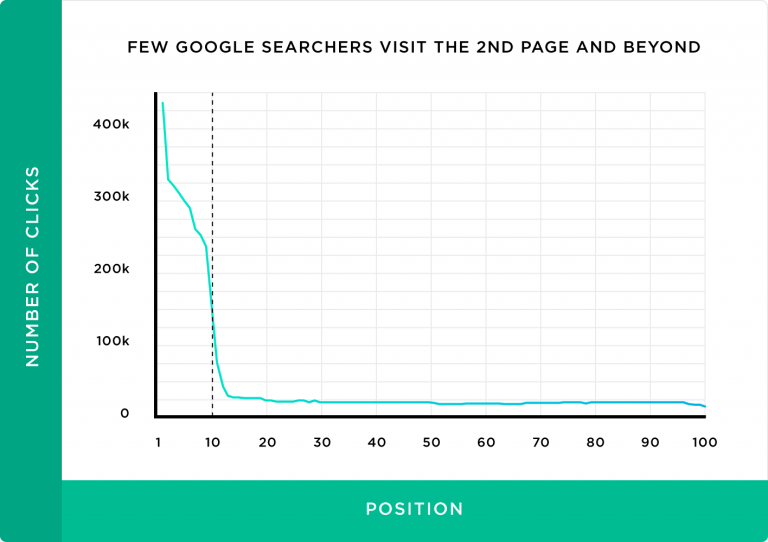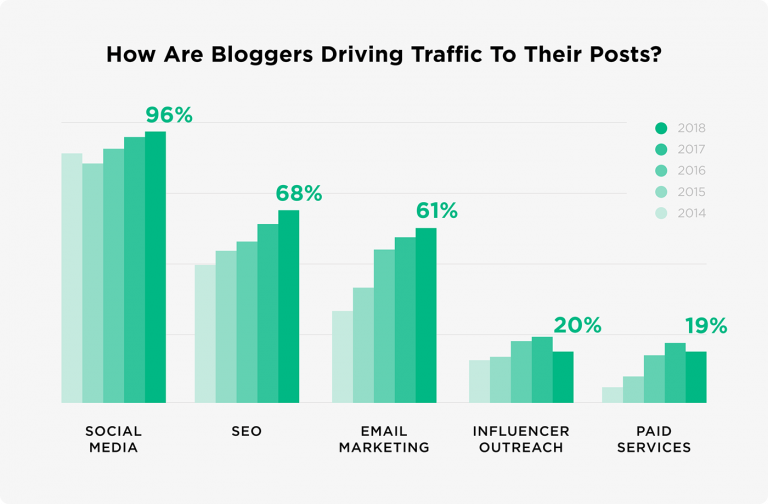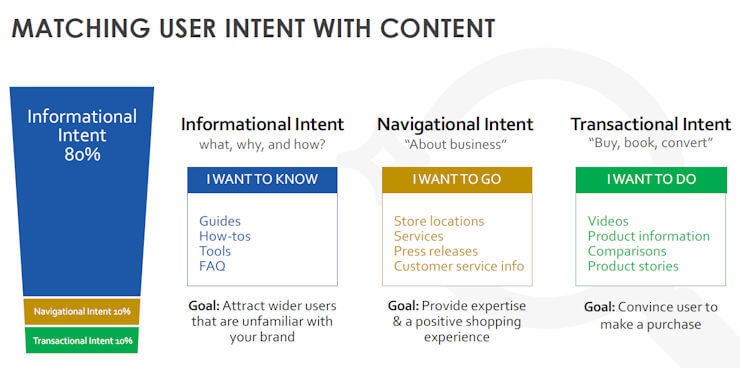SEO is the process of optimising a website's content with the use of certain keywords with the goal of ranking better in the search results of a search engine, for example, Google. SEO is independent of PPC (pay-per-click) results, and focuses on organic rankings. If a business wants to make the most of the web to reach its targeted audience, Search Engine Optimisation is one aspect that cannot be ignored. According to Backlinko, less than 1% of users care to explore beyond the first page of Google.

Website content still relies heavily on SEO for traction, legitimised by a recent survey stating that several bloggers found that SEO was the second most important driver of traffic for their websites.

Owing to these parameters, Drupal has taken into account to include several modules to facilitate SEO in Drupal. Not only are there multiple intent SEO friendly features, Drupal also provides several customizations to fit into the trajectories of various kinds of businesses online.
The Drupal SEO Checklist
Here are some must have SEO modules in Drupal.
For the overall framework
- Real Time SEO for Drupal acts as a constant alarm clock to remind you of things that you might have missed. Since there are a number of technicalities involved in SEO, one might skip one or two if left unassisted. Real time SEO keeps a track of things like post length, meta description, consistency of the focus keyword and its placement in the appropriate places etc.
- Drupal’s SEO checklist module makes use of best practices to check your website for proper optimisation.. It automates most of the on page optimisation making use of the latest techniques that are updated in the module regularly. The way it functions is by breaking down the tasks into functionalities like Title Tags, Paths, Content etc. Links to the associated modules are attached against the task. It also keeps a track of the entire SEO history by placing a time stamp next to each saved item. The SEO checklist module, however, is not for newbies as it requires the user to know the basics of SEO to make optimum use of it.
- The Require on Publish module is best to use in cases where the content has fields such as tags or SEO data that one doesn't really need to fill in until the content is going to be published. Hence, it marks required only when the fields are actually required in the process, and not before that.
- One of the most popular ways of trapping and practicing SEO is to use Google Analytics to look for the trending keywords and then incorporating those in your content. The Google Analytics module allows a number of statistical features to be added to your website like domain tracking, AdSense support, Modal dialog tracking, enhanced link attribution support etc. thus forming an extensive web statistics tracking system for the site. Additionally, you could also use the Googalytics module that provides for integration of Google Analytics in Drupal.
Linking it Right
- Linkit provides a simple interface for internal and external linking with WYSIWYG (What You See Is What You Get) editors with the help of an autocomplete field. This module has, by default, support for all types of entities that define a link template, for example, taxonomy, nodes, files, comments etc. Linkit, however, does not have support for link attributes like title, class or target and one would have to use the Editor Advanced Link for the purpose.
- The Link checker module does exactly what its name suggests. It extracts links from one's content and then at regular intervals, tries to detect broken hypertext links by checking the sites and evaluating the HTTP response codes. If a link check fails, it shows it in the separate section on the content page, hands making it extremely simple to rectify any errors.
- The Footnotes module creates automatically numbered footnote references in the content, making the article look better structured.
- The Redirect module provides the user the ability to create manually redirects for all the content, while also maintaining a canonical URL for it - hence redirecting all other requests to that path.
- Pathauto could also be used in such a case to automatically generate the URL aliases and path redirects, to ensure that the changes in the URL alias do not break the existing links.
For Navigation
- The Easy Breadcrumb module is a navigation tracker, which when embedded in your pages, utilises data from the work you have already done to generate your paths' alias. It is a plug and play module that auto generates the breadcrumb by using the current URL.
- On the other hand the Menu Breadcrumb module allows the user to use the menu that the current page belongs to for the breadcrumb. It uses the titles of the parent menus to generate the breadcrumbs.
Sitemap
- Sitemap module helps make navigation user friendly by providing the visitors a sitemap that gives them an overview of the entire site. It also has provisions for displaying the RSS (Really Simple Syndication) feeds for all the blogs and also for the various categories to explore within the site.
- To generate a sitemap a Simple XML Sitemap can also be used. The sitemaps generated by this module are compliant to Google's standard regarding multilingual content and are also good with respect to SEO in Drupal.
- The XML Sitemap module takes into account the sitemaps.org specifications, while creating sitemaps, helping search engines like Google, Ask and Yahoo! to better understand and place the website.
- Using Menu Attributes, one can specify additional attributes for items in a menu such as ID, name, class etc. The user wants to give the menu and ID so that it is easily detectable using jQuery or when you want to customise the menu.
For tags
- Metatag module is quite useful for a methodical Search Engine Optimisation. It auto generates structured metadata like meta tags, meta description and meta keywords that help improve the overall ranking of the website in the search engine results.
- Hreflang tags are used by search engines to serve the correct language or regional URLs in the search results. Once these tags are generated, the Hreflang module automatically adds these tags to the respective pages.
- The Schema.org Metatag module could be used to further extend the Metatag module to display data in a structured format in the head of web pages.
- The Power Tagging module is used to extract the content of your entity, like node or user, and offer you the concepts and existing free terms that fit best in the context. It has the provision of tagging the entire content automatically via bulk tagging, and also supports multilingual tagging.
- Similar By Terms brings out the similarities in content items based out of taxonomy terms and links assigned to the content, making the site easily navigable.
Combat Error 404
Instead of displaying '404 page not found', the Search 404 module performs a search on the existing keywords in the URL. This helps retain visitors who might happen upon outdated links.
These are some of the major search engine optimisation modules that help Drupal websites achieve optimum SEO, whether directly or indirectly. While the software is constantly evolving to adapt to the changing norms, SEO remains too dynamic of a subject. And with constant parallel innovation in the terms of technology, SEO also keeps undergoing significant changes owing to these trends. Some Optimisation trends that are projected to stay afloat in 2021 are listed below.
SEO trends in 2021
Looking for user’s search intent
As User experience expands and seeps into different arenas, its effect is bound to be seen in SEO as well. Google has been pretty mindful about making search intent a top priority, ie, the search engine aims to display results regarding the search intent of the user. To figure out the search intent, it is imperative to examine the keyword. The intent might be informational, transactional, commercial or navigational. For example, a person that searches for 'buy protein bars' has a transactional intent, and tracking this, the search engine is likely to redirect the person to an online shopping site or a grocery store nearby. But if the person searches for 'best protein bars', the search results will greatly vary, leading him to a blog or an informational website.

Customer Retention
Not just customer acquisition, but retention also needs to be considered while planning out the SEO of a website. When a visitor turns up, you should be interacting with them, answering their questions, and every need that they are searching for. Each keyword that has been used in optimisation of the site should be justified, and there should be appropriate information about it.
Brand SERP Optimisation
SERP (Search Engine Result Page) tracking is projected to become the norm in 2021. This means that brands will go the extra mile to define who they are and what they offer in accordance with Google's Passage Ranking. The SERP layout is projected to undergo change as well, with businesses switching from creating several verticals within the website for different topics to creating long pages for the entire content, for better ranking in the search results.
For this to formulate, we may see more personalized research on consumer behaviour in 2021.
Core Web Vitals
Core Web Vitals include features like page speed, multiple device friendliness, image optimisation in different devices, compliance to security protocols etc. Google introduced core web vitals as a ranking factor in 2021. Hence, it is another aspect that needs to be considered while optimising a website. SEO now is not just about whether it answers your users' queries but also about how satisfied the user is with that information and also whether the environment in which it is being presented seems trustworthy.
Importance of mobile SEO
About 56% of global internet traffic in 2021 has been attributed to be coming from mobile devices, hence while planning out optimisation strategies, the primary area of concern should be the performance of your website when accessed from a smartphone. Hence, a bare minimum mobile experience isn’t going to suffice if you want Google to consider your website setting out the ranking.
Web Automation
The quality as well as quantity of AI (Artificial Intelligence) generated content cannot be beaten, and hence it is expected to increase monumentally in the following year. Jesse Mcdonald, Optimisation Lead at IBM, believes that it is going to be one of the biggest SEO trends in 2021 to roll out automated functionalities with respect to optimisation, cutting down manual SEO wherever possible.
Content is still the king
It has been witnessed that blogs of over 2000 words outperform blogs of 1000 words or less, the former perform better with respect to Google's E-A-T (Expertise, Authoritativeness, Trustworthiness) guidelines. Hence, the long form content trend is to continue in 2021 as well, as most websites try to expand their content to said length.
Content also has immense potential when it comes to expanding the audience base of the article. One sure shot way of getting yourself some subtle marketing is to include some statistics, survey or study that constitutes research related to the topic, as others writing on the same topic will keep linking you in their document while using your research data.
Graphics do the job of grabbing attention really quick, hence visual content should be added at regular intervals for sustaining the reader’s attention. Concept visuals, i.e., visuals that explain tricky concepts are especially helpful and are more likely to be shared and referred to.
Lastly, all the constant research that is done over topics from time to time can be brought to good use by presenting a bunch of content on a specific topic as a ‘hub’. These work exponentially well for SEO, and also are a form of value rich content that is likely to grab attention in a good way and be shared widely.
Visual Search
With the popularity of Google lens soaring, visual search has been trending throughout the year and will continue to occupy space in 2021 trends as well. Therefore, optimising images on your website has become as essential, as according to Backlinko, as 32.5% pages that ranked in Google Lens had a keyword in their Title tag that matched Google's Vision Label.
Conversational UI: Voice and Video interfaces
Google Home and Alexa how become the new members of most internet connected households today, simply because the added convenience these devices bring with themselves. This is the reason why Search Engine Optimisation for voice search is not an option to consider anymore - it is quite a necessity. With Google and Alexa constantly referring to sites that consist of the user's question and answer both, FAQ lists are becoming more and more important. According to Google, 4 out of 10 US adults perform at least one voice search in a day.
Videos are a significant element that are driving significant traffic to websites, as demonstrated by the following graph.

With a dedicated social media platform just for videos (YouTube), the change is quite inevitable and was bound to happen. Video Optimisation is the future of SEO today, hence keyword optimisation needs to be done in the multimedia of your site as well.
Featured Snippets
Google's search results have become smart as well. With increased focus on User experience, the search engine realises that it is pretty inconvenient for a user to click on every website to read the contained content. So it displays the related content in the form of a Q&A as a part of its featured snippets.
Backlinks
Creating backlinks can also effectively improve SEO rankings and drive traction to the site, but this can only be achieved when the content is good enough to quote, or already has a good enough SEO or an online presence in order to be tracked by other websites. Guest posting is another way of tapping into backlinks.
Google Passage Ranking
Similar to Featured Snippets, Google has also started to run specific passages from websites that appear relevant to the search result. Google also specified that this feature does not mean that the passages are assessed independently of their pages, but simply means that specific paragraphs can also be an additional ranking factor from now on.
Domain Authority
With E-A-T evaluation setting in, domain authority is less about links and more about this part of the guideline now - as Google says that it wants to rank pages that are 'reliable sources' and appear to have content that is reflective of the qualities of 'expertise, authoritativeness and trustworthiness'.
- Creators of the content of the page are taken into account - is the content generated at random by freelancers, or are these people experts in the particular topic?
- A suspicious looking website will not rank well on Google's search results, as the notions of transparency and accountability are gaining ground widely.
- Maintaining a good reputation outside of a website is also equally important. There is nothing worse than your website claiming something and external sources disagreeing with it. Similarly, being cited on other websites on a positive note is considered while ranking as well.
Combating decreasing CTRs
It is common knowledge that organic click-through-rates are down. And yet it comes as no surprise, because it is quite difficult for organic to survive among features like SERP, Ads, and others. There is a way to combat this practice and stand out, even though a little, in this race - and that is by creating keyword rich URLs, as they have been shown to get much more clicks than URLs without the keyword that the user has searched for.
Conclusion
Even after 20 years of its conception, Drupal continues to remain a favourite in website creation, and that is primarily due to its high level of customisation and adaptability to the present trends. Today we see individuals and organisations both contributing to and relying on Drupal because it has a solid foundation of what it takes to stay up to date, even when it comes to SEO - through its extensive modules and distributions. Rest assured, come what may, the community stands prepared to make the most of these upcoming trends.
Subscribe
Related Blogs
Inside the Drupal AI Summit: Themes, Speaker and What To Expect

“ The web is changing fast, and AI is rewriting the rules. It writes content, builds pages, and answers questions directly,…
FOST and Drupal AI Initiative: Next Era of Responsible AI

Three years after the launch of generative AI tools marked a new age for artificial intelligence, almost 90% of survey…
Drupal AI Ecosystem Part 5: AI Content Suggestions

Drupal has steadily evolved from being just a content management system into a flexible platform that incorporates emerging…




